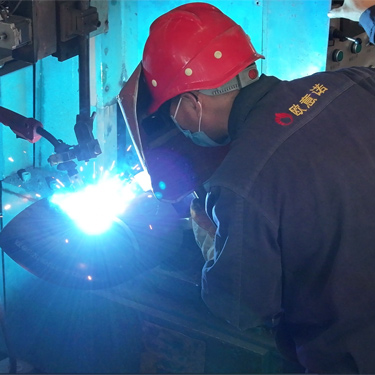
Dec . 04, 2024 09:12
Back to list
Understanding the Functionality and Benefits of Pressure Reducing Regulators in Fluid Systems
Understanding Pressure Reducing Regulators Essential Components for Fluid Control
In many industrial and commercial applications, maintaining a consistent pressure level is crucial for the efficient operation of machinery and processes. This is where pressure reducing regulators (PRRs) play a vital role. These devices manage and regulate the pressure of gases and liquids, ensuring optimal performance and safety in various systems. In this article, we will explore the functionality, types, applications, and benefits of pressure reducing regulators.
What is a Pressure Reducing Regulator?
A pressure reducing regulator is a device designed to automatically reduce and maintain the pressure of a fluid flowing through a system. It takes high-pressure input from a source, such as a gas cylinder or pipeline, and reduces it to a lower, stable output pressure that is suitable for the specific application. The primary function of a PRR is to prevent pressure fluctuations that could lead to equipment damage, safety hazards, or inefficient operations.
How Does a Pressure Reducing Regulator Work?
The working principle of a pressure reducing regulator is relatively simple. The device consists of a spring-loaded diaphragm that responds to the pressure changes in the system. When the high-pressure fluid enters the regulator, it pushes against the diaphragm. The diaphragm movement adjusts a throttling mechanism that controls the output pressure. As the downstream pressure rises to a preset level, the diaphragm closes the flow path partially, reducing the flow of incoming fluid. Conversely, if the downstream pressure drops, the diaphragm opens the flow path to maintain equilibrium.
The ability of PRRs to quickly and automatically adapt to changes in system pressure makes them indispensable in various applications, from industrial equipment to residential gas lines.
Types of Pressure Reducing Regulators
There are several types of pressure reducing regulators, each designed for specific applications and requirements. The most common types include
1. Spring-Loaded Regulators These are the most frequently used regulators, utilizing a spring mechanism to control pressure. They are simple, reliable, and suited for a wide range of applications.
2. Dome-Loaded Regulators These regulators use a gas-filled dome to balance the pressure. They offer precise control and are ideal for processes that require accurate pressure regulation.
3. Electropneumatic Regulators These advanced regulators integrate electronic controls for more precise regulation. They are commonly used in automated systems and processes that demand high accuracy.
4. Back Pressure Regulators Unlike standard PRRs that reduce the pressure at the outlet, back pressure regulators maintain a certain pressure upstream in the system. They are crucial for applications where pressure control is needed upstream of a control valve.
Applications of Pressure Reducing Regulators
pressure reducing regulators

Pressure reducing regulators find applications in various industries, including
- Oil and Gas PRRs are used to control the pressure of gas coming from pipelines to ensure safe and efficient transfer to processing facilities.
- Chemical Processing In chemical plants, these regulators maintain the desired pressure levels for reactions, helping to optimize yield and safety.
- Manufacturing and Production Equipment such as pneumatic tools and hydraulic systems rely on stabilizing pressure to function correctly.
- HVAC Systems In heating, ventilation, and air conditioning applications, PRRs help regulate gas pressure for burners and other components.
- Medical Gas Systems In hospitals, pressure reducing regulators are essential for managing the supply of gases like oxygen, ensuring patient safety and effective treatment.
Benefits of Using Pressure Reducing Regulators
The implementation of pressure reducing regulators offers several benefits
1. Enhanced Safety By preventing over-pressurization, PRRs reduce the risk of equipment failure and associated hazards.
2. Improved Efficiency Stable pressure levels lead to consistent operations, reducing energy waste and improving overall system performance.
3. Longer Equipment Life By minimizing fluctuations and regulating pressures, PRRs help extend the lifespan of machinery and components, leading to lower maintenance costs.
4. Flexibility With various designs available, PRRs can be used in many applications, allowing for customization to meet specific operational needs.
Conclusion
In summary, pressure reducing regulators are pivotal in ensuring safe and efficient fluid management across numerous industries. By understanding their functionality, types, and applications, businesses can better appreciate the role of these devices in maintaining operational excellence and safety. Whether in chemical processing, HVAC systems, or gas supply lines, the importance of PRRs cannot be understated, making them essential components in modern fluid control systems.
Next:
Latest news
-
Safety Valve Spring-Loaded Design Overpressure ProtectionNewsJul.25,2025
-
Precision Voltage Regulator AC5 Accuracy Grade PerformanceNewsJul.25,2025
-
Natural Gas Pressure Regulating Skid Industrial Pipeline ApplicationsNewsJul.25,2025
-
Natural Gas Filter Stainless Steel Mesh Element DesignNewsJul.25,2025
-
Gas Pressure Regulator Valve Direct-Acting Spring-Loaded DesignNewsJul.25,2025
-
Decompression Equipment Multi-Stage Heat Exchange System DesignNewsJul.25,2025

